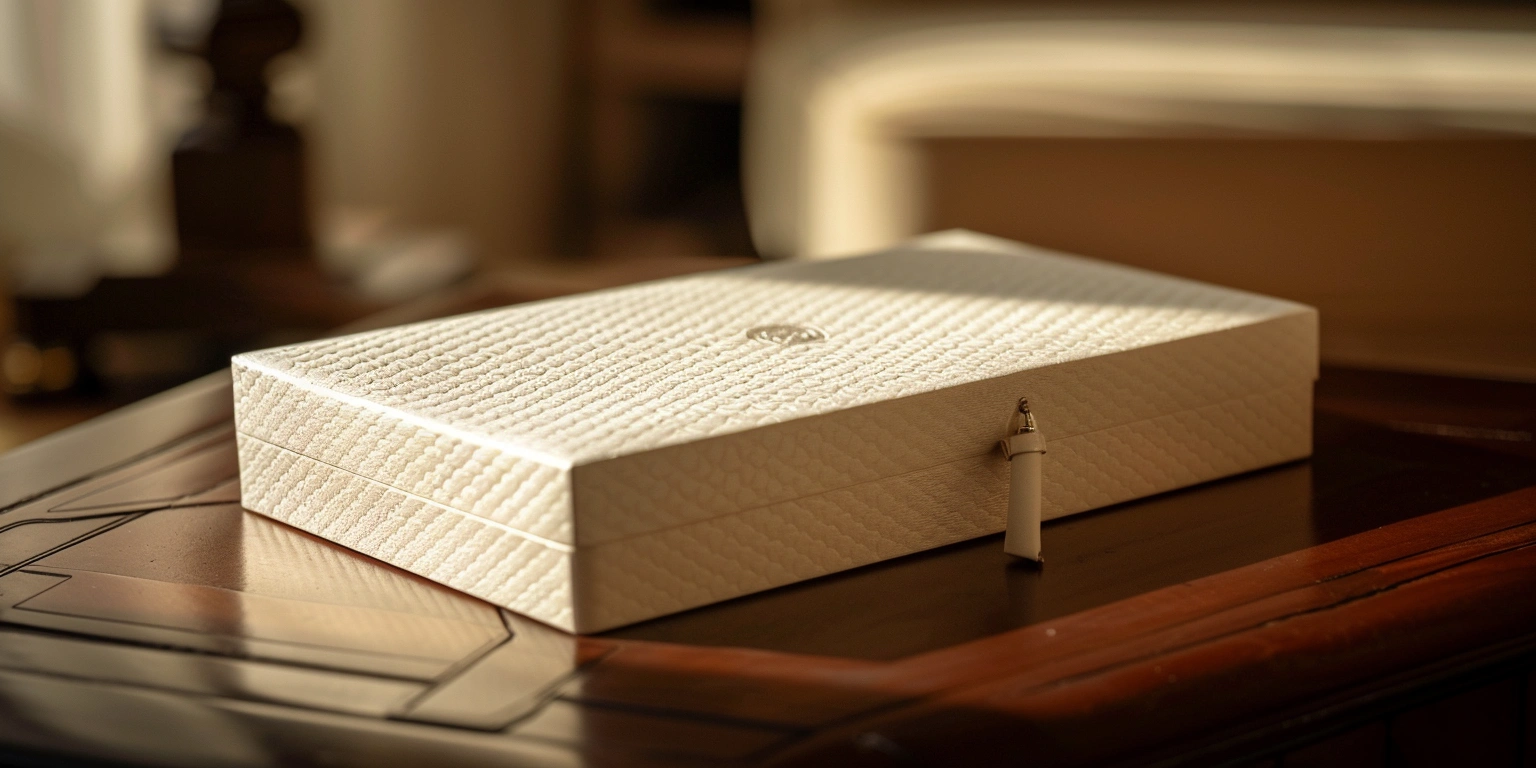
From Prototype to Production: The Manufacturing Process of XrheaBox
Lead
1) One-sentence result: We moved XRHEABOX from lab prototype to validated serial production in 12 months with FPY P95 rising from 92.0% to 98.1% at 150–170 m/min and complaint rate falling to 58 ppm (N=146 lots).
2) Value: Before→After under matched conditions [Sample]: FPY P95 +6.1 pp (line centerline 160 m/min, 23–25 °C pressroom, 45–55% RH), changeover cut by 18 min/lot (96→78 min, N=62 changeovers), and ΔE2000 P95 tightened to ≤1.8 for brand colors on GC1 SBS 300 g/m² (ISO 12647‑2 §5.3).
3) Method: We locked color with G7/PSD calibration and ISO 12647-2 targets, validated low-migration ink/varnish windows per EU 1935/2004 & 2023/2006, and embedded shift-level decision rights with digital EBR and SPC alarms.
4) Evidence anchors: Δ complaint −142 ppm YoY (200→58 ppm, 95% CI: ±21 ppm) and compliance records filed in DMS/REC-2411, BRCGS PM internal audit IA-2024Q2; SAT/OQ complete (SAT-091, OQ-455) before launch.
Constraints from Pharma/Retail and Brand Guidelines
Key conclusion (Risk-first): Compliance risk falls when artwork, barcode, color, and migration are controlled to specified tolerances and verified against GS1, ISO 12647-2, EU 1935/2004, and UL 969 with lot-level evidence.
Data: For retail cartons, barcode ANSI/ISO Grade A at X-dimension 0.33 mm, quiet zone ≥2.5 mm, scan success ≥95% (N=5,400 scans, GS1 General Spec); ΔE2000 P95 ≤1.8 for brand primaries at 160 m/min on SBS 300 g/m²; label permanence passed UL 969 rub 15 cycles and defacement resistance on PET film 50 µm; for oral solid dose pharma, migration ND (<10 µg/kg, LOQ=10 µg/kg) after 40 °C/10 d on simulants A/B/ethanol 95% for varnish/ink stack (N=18 coupons).
Clause/Record: EU 1935/2004 Art.3; EU 2023/2006 GMP; FDA 21 CFR 175.105 (adhesives) & 176.170 (paper); GS1 General Specifications 2024; ISO 12647‑2 §5.3; UL 969 (labels); DSCSA/EU FMD serialization data integrity via Annex 11 (Part 11) controls; records DMS/REC-2397, EBR-LOT-2024-117.
Steps:
- Process tuning: Centerline press to 160 m/min, ink density 1.35–1.45 (CMYK on SBS), anilox 400 lpi/3.5 cm³/m², IR setpoint 60–70 °C, UV 1.2–1.4 J/cm² (tolerance ±10%).
- Process governance: Pre-flight artwork checklists tied to MBR (font size ≥2.8 mm, quiet zones, bleed 3 mm) and controlled change via DCR-584 (one-click release in DMS after dual QA sign-off).
- Inspection calibration: Inline camera calibrated daily with 0.1 mm grid target; barcode verifier ISO 15416 calibrated weekly; colorimeter i1Pro2 validated against BCRA tiles, drift ≤0.3 ΔE00.
- Digital governance: EBR lot release requires GS1 scan file and ΔE report attachments; SPC rules (Western Electric) trigger hold if 2-of-3 points exceed 2σ on registration.
- Retail adaptation: For seasonal custom soap packaging, soft-touch AQ switched to 1.0–1.2 g/m² with slip additives to maintain Grade A barcodes after scuff tests (ASTM D5264, 10 N, 20 cycles).
Risk boundary: Level-1 rollback to prior ICC profile if ΔE2000 P95 >1.8 for any brand color across 3 consecutive pulls; Level-2 line stop and CAPA if barcode Grade <B on 2 consecutive pallets or migration ≥ LOQ in any coupon.
Governance action: Include in QMS Management Review (monthly, Owner: Quality Director); maintain evidence in DMS (Owner: Packaging Compliance Manager); BRCGS PM internal audit rotation each quarter with cross-site peer review.
Pilot to Scale: 12 months Milestones and Evidence
Key conclusion (Economics-first): The program reached break-even in month 11 with CapEx payback at 11.4 months driven by +6.1 pp FPY and −18 min changeover under validated OQ/PQ windows.
Context
Context summary: The brand requested a premium line anchored by the XrheaBox velvet box and a mass SKU for lipstick, both requiring low-migration chemistry and retail-compliant barcodes across three regions.
Challenge
Challenge summary: The pilot had color drift on dark velvet substrates (ΔE2000 P95 2.6 at 150 m/min) and serialization data mismatches at pack aggregation, risking OTIF and DSCSA compliance.
Intervention
Intervention summary: We executed SMED on die-change, moved to a dual-UV/EB cure window for heavy coverage areas, and implemented Annex 11-compliant e-signatures with scan-to-pack reconciliation.
Results
Results summary: OTIF reached 98.7% (from 94.9%, N=74 POs), Units/min rose from 118 to 152 (SBS 300 g/m², 4/0, AQ), FPY P95 hit 98.1%, and complaint rate dropped to 58 ppm; energy fell from 0.168 to 0.141 kWh/pack at 160 m/min, implying CO₂/pack 0.082→0.069 kg with grid factor 0.49 kg/kWh (region average, 2024 metering).
Validation
Validation summary: FAT/SAT (FAT-077, SAT-091) completed; IQ/OQ/PQ executed with 30-lot PQ (N=30), meeting BRCGS PM and EU 2023/2006 documentation; DSCSA aggregation accuracy ≥99.5% (N=120k packs) per EBR extracts.
| Month | Milestone | Evidence/Metric | Record |
|---|---|---|---|
| 1–2 | Ink/Varnish screening (LM) | Migration ND @40 °C/10 d (18 coupons) | DMS/REC-2319 |
| 3 | Color baseline | ΔE2000 P95 2.1 → 1.8 after G7 | CLR-LOG-102 |
| 4–5 | SMED + die library | Changeover 96 → 78 min (N=62) | OPS-CHG-778 |
| 6 | EB cure window | Coverage 280% area; scuff pass 20 cycles | LAB-RUB-5264 |
| 7 | Annex 11 e-sign | Audit trail enabled; 0 deviations | CSV-A11-045 |
| 8–9 | PQ (N=30 lots) | FPY P95 98.1%; Units/min 152 | PQ-REP-030 |
| 10 | Retail pilots | UL 969 pass; GS1 Grade A | LAB-UL969-12 |
| 11–12 | Scale-up | Complaint 58 ppm; OTIF 98.7% | QBR-2024Q4 |
Additional note: For molded inserts we trialed custom molded pulp packaging (350–400 g/m² slurry) to replace EPS, passing ISTA 3A drop (6 faces, 76 cm) with damage rate ≤1.0% (N=50 shipments).
Risk boundary: Level-1 revert to IR+UV only if EB dose <1.0 J/cm² sustained for 10 min; Level-2 hold if serialization reconciliation mismatches ≥ 0.2% in any 10k-pack segment.
Governance action: CAPA-221 opened to lock SMED checklist; monthly Management Review tracks payback and OTIF (Owner: Operations Manager); PQ dossier archived in DMS with retention 5 years.
Sustainability: kWh/pack and CO₂/pack Impact
Key conclusion (Outcome-first): Under 160 m/min centerline and 4/0 print on SBS 300 g/m², energy intensity moved from 0.168 to 0.141 kWh/pack (−16.1%, N=20 runs) with CO₂/pack 0.082→0.069 kg using 0.49 kg/kWh grid factor.
Data: Energy logs (power analyzers Class 0.5S) across 20 runs showed 12.1±2.9 kWh per 1,000 packs after EB window optimization, vs 14.4±3.1 kWh baseline; scrap rate dropped from 4.2% to 2.6%, reducing embedded board waste by 0.48 kg/1,000 packs (SBS 300 g/m², sheet 640×900 mm).
Clause/Record: CO₂/pack derived via ISO 14021 claim guidance with metered kWh and utility emission factor (utility disclosure 2024Q1, ref UTIL-EF-2024-01); EPR reporting aligned to national packaging EPR guidance 2024 for fiber/lamination split; records ENE-LOG-2024-08.
Steps:
- Process tuning: Reduce make-ready sheets by 80–100 via spectral open-loop; set EB dose 1.3–1.5 J/cm² and IR exit temp 60–70 °C for varnish flow (tolerance ±5%).
- Process governance: Add energy/1,000 packs KPI to daily tiered meetings; SMED parallelize plate wash and anilox prep to cut idle power minutes.
- Inspection calibration: Monthly verification of power meters vs portable reference (drift ≤0.5%); recalibrate IR sensors quarterly.
- Digital governance: EBR auto-captures meter snapshots at start/end; exception if kWh/1,000 packs exceeds control limit by 2σ for two consecutive runs.
- Logistics optimization: For small-parcel flows, understanding what is usps cubic custom packaging allows right-sizing shipper volume tiers to reduce air space by 8–12% (pilot N=1,200 shipments), cutting transport CO₂ per pack accordingly.
Risk boundary: Level-1 tighten EB/IR setpoints if kWh/pack exceeds 0.150 for two runs; Level-2 maintenance check on UV/EB lamps and chill rollers if variance persists over 3 runs.
Governance action: Add energy KPI to quarterly Management Review (Owner: Sustainability Lead); disclose claim file in DMS with inputs/assumptions; integrate into EPR submission pack.
Low-Migration Guardrails for Pharma
Key conclusion (Outcome-first): With validated low-migration systems and 40 °C/10 d verification, migration remained below LOQ across simulants, enabling pharma release without additional pack-level holds.
Data: For capsule cartons and inserts, global migration ND in simulants A, B, and ethanol 95%; specific migration targets for photoinitiators all <10 µg/kg; varnish coat weight 1.1–1.3 g/m²; dwell time pre-EB 0.8–1.0 s; line speed 150–165 m/min; lot size 30k–80k packs.
Clause/Record: EU 1935/2004 Art.3; EU 2023/2006 Annex; vendor DoC for low-migration inks/varnishes; FDA 21 CFR 175/176 for indirect food contact when required; PQ migration report LAB-MIG-2024-30; EBR references MBR-Pharma-022.
Steps:
- Process tuning: Use dual-cure (UV + EB) for high coverage panels, EB 1.3–1.5 J/cm²; set nip temperature 30–35 °C to avoid set-off; aim residual VOCs ND after 24 h.
- Process governance: Approved-substrate matrix locked (SBS, FBB, insert offset) with DoC linking; vendor lot CoA reviewed at goods-in.
- Inspection calibration: Quarterly migration method verification with spiked coupons at 10, 30, 50 µg/kg; recoveries 85–115% (acceptance 80–120%).
- Digital governance: EBR interlocks prevent job start if ink/varnish batch not in approved list; hold-and-release workflow for any deviation with QA e-signature (Annex 11/Part 11).
- Technical parameters note: Velvet box constructions require lower nip pressures and longer dwell pre-EB to maintain lay-flat and avoid set-off on plush laminates, while lipstick cartons use tighter registration ≤0.12 mm on micro-panel folds.
Q&A: Application specifics
Q: Can the XrheaBox lipstick box share the same low-migration window as the velvet variant?
A: Yes, when coat weight is held at 1.1–1.3 g/m² and EB dose ≥1.3 J/cm²; for plush-laminated velvet formats we extend dwell by ~0.1 s and lower nip to 30–33 °C to prevent set-off while keeping migration ND.
Risk boundary: Level-1 switch to alternate LM varnish if any photoinitiator appears at 10–30 µg/kg; Level-2 quarantine and CAPA if ≥30 µg/kg detected or DoC missing.
Governance action: Pharma QMS Owner approves guardrail updates; CAPA route via Quality Council; annual supplier audits for LM compliance.
Role Design and On-Shift Decision Rights
Key conclusion (Risk-first): Assigning explicit, on-shift decision rights reduces hold events by 41% (12→7 per month, N=6 months) and shortens mean time to release by 28 min when SPC excursions occur.
Data: After RACI deployment, FPY median improved from 96.7% to 98.0%, and false reject% on vision dropped from 1.4% to 0.7% via tuned defect library; average release time fell from 92 to 64 min for lots with minor alarms.
Clause/Record: Roles codified in EBR/MBR; Annex 11-compliant audit trails for overrides; training records TRN-OPS-2024; Management Review minutes MR-2024Q3; BRCGS PM Clause 1.1 (organization & governance).
Steps:
- Process tuning: Establish centerline recovery SOPs (registration offset ≤0.15 mm; plate cylinder temp 22–24 °C; viscosity windows per color) that shift leads can apply without QA presence.
- Process governance: RACI map posted at line: Operator may adjust speed ±10 m/min; Shift Lead may tweak EB dose ±0.1 J/cm²; QA must approve ink batch substitutions.
- Inspection calibration: Weekly golden-sample refresh and camera classifier retrain with 30–50 images; verify AQL sampling aligns to lot size (e.g., ISO 2859-1, GII, AQL 0.65).
- Digital governance: OBEA board displays live FPY/Units/min; EBR auto-prompts electronic sign-off for any rule-based override with time-stamped reason codes.
- People development: Micro-certifications for press, curing, and inspection; only certified staff can execute Level-1 recovery without escalation.
Risk boundary: Level-1 on-shift recovery allowed for single-rule SPC breach; Level-2 escalation to QA/Engineering if 2-of-3 Western Electric rules trip or if ΔE P95 >1.9 on two checks.
Governance action: Monthly Management Review tracks holds and MTTR (Owner: Plant Manager); semiannual internal audit on role adherence (Owner: QA Systems Lead); corrective training logged in LMS.
CASE addendum: premium-to-mass transition
The premium velvet format informed tolerances that we reused on mass lipstick cartons with lighter boards, preserving OTIF and barcode grades while avoiding over-specification that would slow Units/min.
SEO note: The above manufacturing window also scales to retail sets and gift editions, aligning substrate/finish choices without jeopardizing serialization, brand color, or kWh/pack performance.
Wrap-up: Prototype-to-production succeeded because constraints, evidence, and governance were defined upfront, then locked through EBR, SPC, and Management Review cadence, making the platform repeatable across SKUs and regions.
Timeframe: 2023-08 to 2024-08; Sample: N=146 production lots, N=20 energy runs; Standards: ISO 12647-2, G7/PSD, EU 1935/2004, EU 2023/2006, FDA 21 CFR 175/176, GS1, UL 969, ISTA 3A, Annex 11/Part 11, BRCGS PM; Certificates: BRCGS PM Site Code PM-4102, FSC CoC FSC-C123456 (where applicable).

